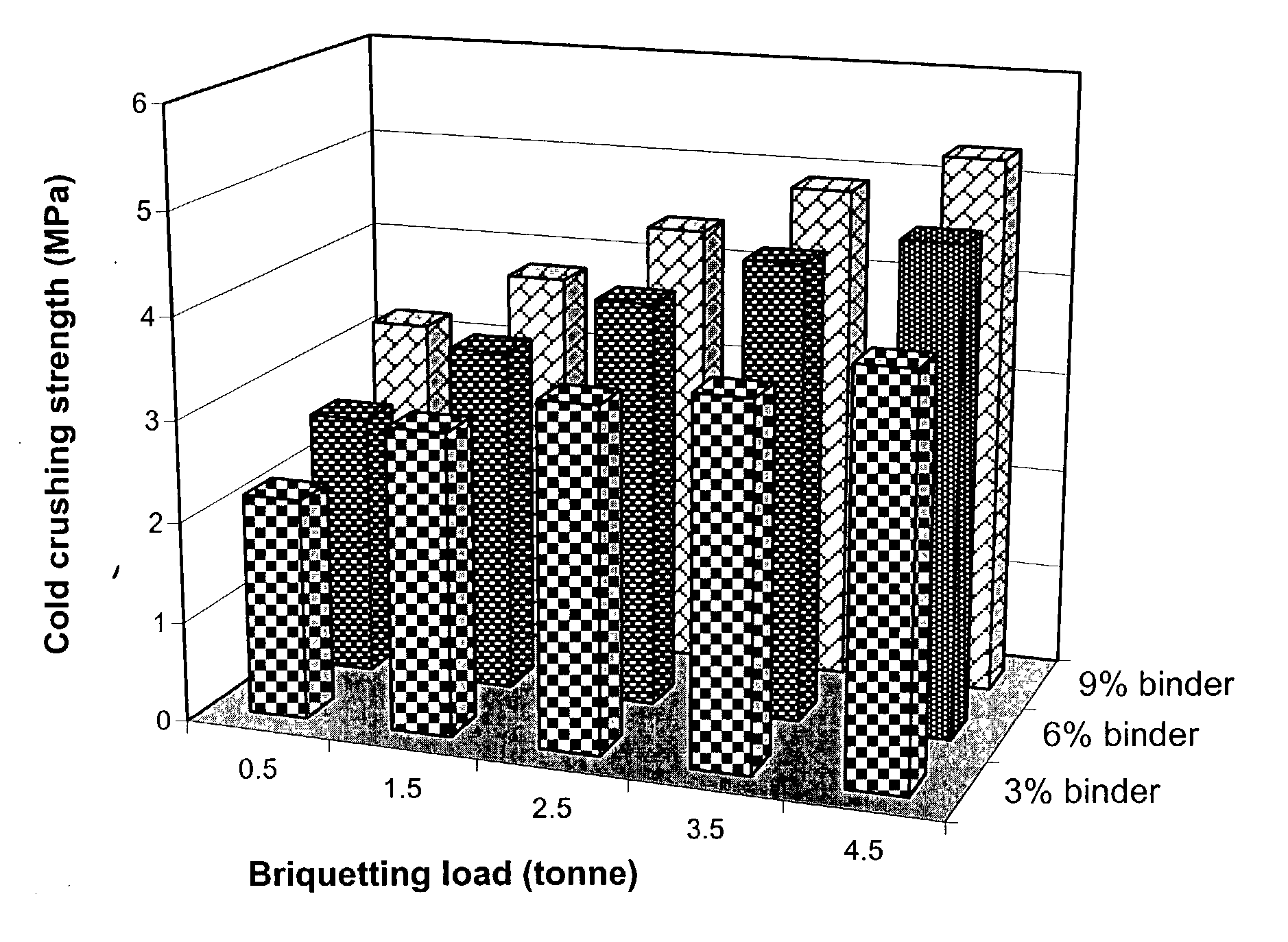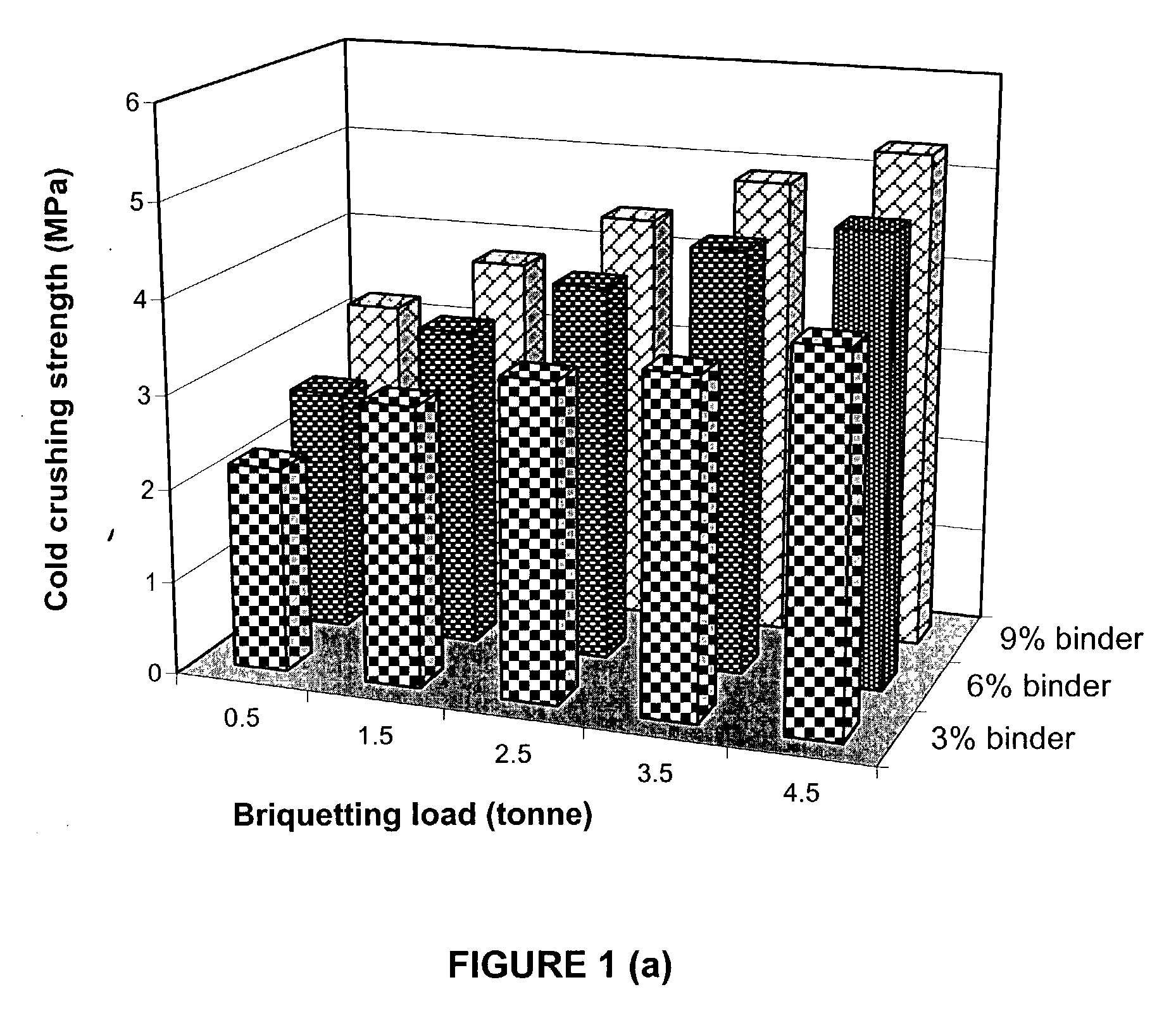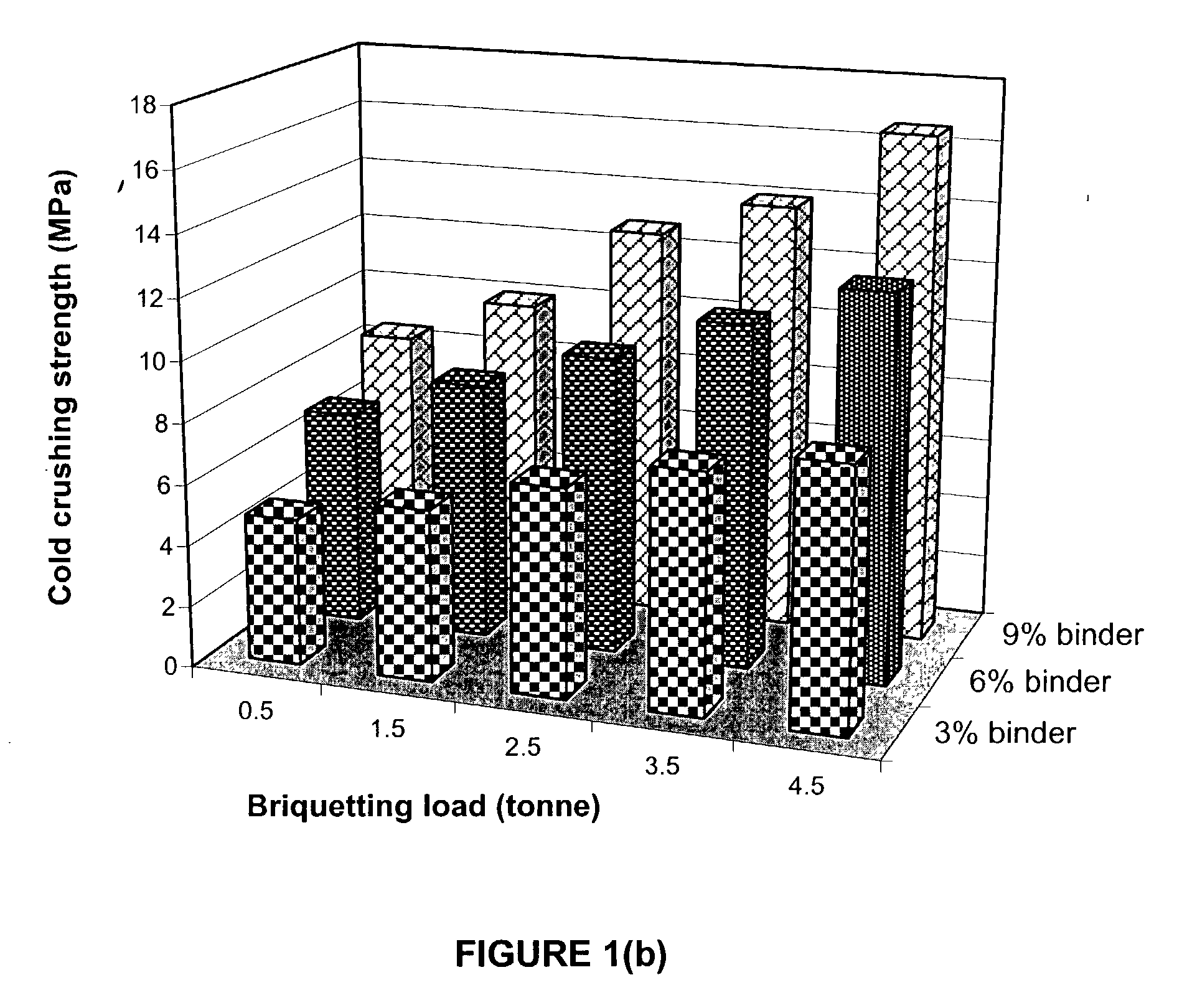Process for cold briquetting and pelletisation of ferrous or non-ferrous ores or mineral fines by iron bearing hydraulic mineral binder
a technology of iron bearing hydraulic mineral binder and cold briquetting, which is applied in the direction of process efficiency improvement, solid waste management, sustainable waste treatment, etc., can solve the problems of poor sinterability and reducibility of briquettes and pellets, unsatisfactory durability, volume stability and thermal stability, and unsatisfactory performance in respect of moisture resistance and moisture resistan
- Summary
- Abstract
- Description
- Claims
- Application Information
AI Technical Summary
Benefits of technology
Problems solved by technology
Method used
Image
Examples
example 1
[0070] Iron ore (-6.3 mm size) 3.600 kg, iron rich mineral binder 0.400 kg (10% ore basis) and 0.130 litre water [water to binder (W / B) ratio 0.32] are altogether mixed in a drum mixture for 5 minutes. Green mixture of 2 kg each is then used to make cylindrical briquettes of 30 mm diameter under 0.5 tonne and 5 tonne compression load. In order to maintain identical weight of the briquettes, 55 g of green mixture is used per briquette. Accordingly, 30 number of briquettes under load 0.5 tonne having 0.70 compression ratio and 5 tonne having 0.60 compression ratio are made. Both the briquette samples are water cured after 12 hours of interval in normal atmospheric air up to 20 days for hydration of binder and development of cold strength. Cold bonding strength of the briquettes develop with time and on the rate pf hydration of binder. The binder attains almost 90% of its hydration strength in 20 days and balance strength within 90 days. The briquettes made under 0.5 tonne and 5.0 tonn...
example 2
[0071] Iron ore (-4 mm size) 1.680 kg, coke dust (-0.5 mm) 0.160 kg, iron rich mineral binder 0.160 kg (8% on weight basis), water 70 ml and surface active agent 2 ml are mixed in a tray for 5 minutes. The green mixture is briquetted under 3 tonne compression load to produce 30 mm diameter cylindrical briquettes at compression ratio of 0.62. Using 50 g of mixture for each briquette. 20 briquettes are made from the above mixture and cured in water for 28 days. The coke containing composite iron ore briquette attains 6.4, 13.0, 18.6, 23.5, 25.8 and 27.0 MPa as the average cold crushing strength at 1, 3, 7, 14, 21 and 28 days of water curing respectively.
example 3
[0072] BOF dust (-1 mm size) 2.000 kg, mill scale (-3.0 mm) 0.800 kg, iron ore (-2 mm) 0.800 kg, iron rich mineral binder 0.400 kg (10% on weight basis), water 120 ml and surface active agent 5 ml are mixed altogether in a drum mixture for 5 minutes. Green mixture of 2 kg of each is used to make 30 mm diameter cylindrical briquettes under 4 tonne and 5 tonne compression load. Weight of green mixture used for each briquette is 45 g. Accordingly, 40 briquettes each under 4 tonne and 5 tonne load are made and cured in water for 28 days. The briquettes made under 4 tonne and 5 tonne compression load attain 5.5, 13.5, 18.5, 22.0, 24.4 and 26.2 MPa and 8.0, 16.3, 21.5, 25.0, 26.8 and 28.5 MPa respectively as the average cold crushing strength at 1, 3, 7, 14, 21 and 28 days of curing in water.
PUM
| Property | Measurement | Unit |
|---|---|---|
| Fraction | aaaaa | aaaaa |
| Fraction | aaaaa | aaaaa |
| Fraction | aaaaa | aaaaa |
Abstract
Description
Claims
Application Information
 Login to View More
Login to View More - R&D
- Intellectual Property
- Life Sciences
- Materials
- Tech Scout
- Unparalleled Data Quality
- Higher Quality Content
- 60% Fewer Hallucinations
Browse by: Latest US Patents, China's latest patents, Technical Efficacy Thesaurus, Application Domain, Technology Topic, Popular Technical Reports.
© 2025 PatSnap. All rights reserved.Legal|Privacy policy|Modern Slavery Act Transparency Statement|Sitemap|About US| Contact US: help@patsnap.com



